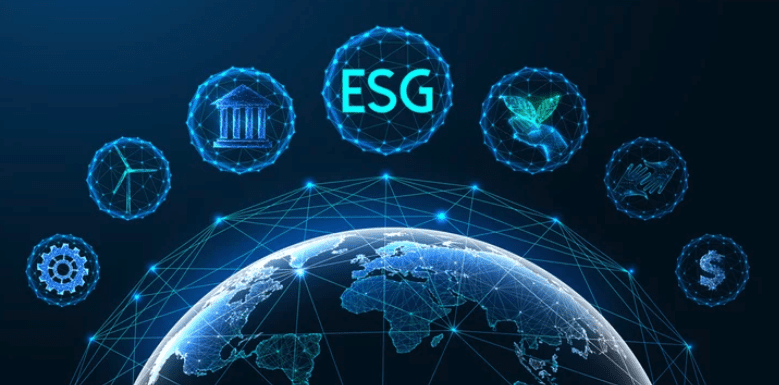How Importers Can Comply with the Uyghur Forced Labor Prevention Act

Through heightened due diligence, a strong understanding of their supply chains, and the right supporting technology, importers can do their part in the fight to help eradicate human rights violations around the globe.
The last few years have provided some unprecedented disruptions to the supply chain—from a pandemic to a container ship getting stuck in the Suez Canal—which, in turn, created unprecedented shortages in materials and finished goods, shipping bottlenecks, record ocean container prices, and even labor shortages.
As a result, corporate supply chain and risk mitigation planners have also been receiving unprecedented attention within the C-suites of trade-dependent companies. And while one could certainly argue these instances were once-in-a-lifetime events, as the saying goes: “Once-in-a-lifetime events happen every day.”
It also doesn’t take a pandemic to bring your supply chain to its knees as there’s a broad array of factors that can also do the job quite nicely. As a result, corporate risk mitigation planners need to be including these when vetting either a new foreign supplier or a new foreign production site.
These factors include geopolitical tension, business/government crime and corruption, financial stability, power grid stability, natural resources, available labor pool and stability, and even the risk of disruption due to weather and geological events.
In addition, companies are now also faced with a growing set of challenges and risks associated with environmental, social, and corporate governance (ESG) requirements—from a company’s efforts to reduce climate change and carbon emissions, to its demonstrated support of inclusiveness and human rights.
And it’s the latter, in the form of forced labor, that has now quickly grown into a major issue with real risk for trade-dependent companies.
The Shocking Reality of Forced Labor
At face value, just the term “forced labor” alone and the images that it conjures generates overwhelming public abhorrence to this practice even without fully understanding its true magnitude, or how deeply it’s embedded in the complex production and movement of goods around the world.
For example, the International Labour Organization estimates nearly 50 million persons are living in modern slavery, with 28 million of those working under forced labor conditions, including more than 3.3 million children.
It’s a problem found at every stage of the supply chain—from workers made to harvest fields or mine metals at the raw material level, to those forced to manufacture parts or assemble finished products on the factory floor—making it highly difficult to spot, much less eradicate. Exploitation even extends to the warehousing and shipping operations that connect each point in a supply chain network.
While these human rights violations exist nearly everywhere in the world, they are particularly prevalent in Asia and the Pacific region where more than 11 million people are in forced working conditions. Unfortunately, the problem doesn’t stay confined there. Materials and goods produced across this region eventually make their way into the global marketplace. Other businesses and consumers unknowingly (and sometimes knowingly) end up making purchases tainted by slave labor or child labor—which only fuels the vicious cycle.
Atrocities in Xinjiang Spur Action
In recent years, the Chinese government has committed crimes against humanity, such as imprisonment, torture, surveillance, and forced sterilization. These horrific acts target the Uyghur people, a predominantly Muslim ethnic minority, as well as members of other mostly Muslim minorities in Xinjiang.
Since 2017, the Chinese government has involuntarily detained more than one million Uyghurs in forced labor camps, while separating families and sending others to work in factories throughout China. With forced labor so prevalent, it’s highly likely that any goods coming from the region are products of the severe exploitation of the Uyghur people.
What will it take to eradicate human rights violations in the supply chain? There is no easy answer, but it will certainly require the combined efforts of governments around the world, as well as the cooperation and political will of businesses who import materials and goods originating from high-risk areas.
The United States government has recently taken strong steps with the Uyghur Forced Labor Prevention Act (UFLPA). Signed into law by President Biden on December 23, 2021, the ULFPA is designed to prevent goods made wholly or in part with forced labor in the Xinjiang region of China from entering the United States.
Located in Northwest China, the Xinjiang Uygur Autonomous Region is a massive territory that’s rich in natural resources. The area supplies global supply chains with significant amounts of important industrial materials, as well as agricultural products—like the polysilicon used in solar panels and the cotton for Western apparel.
And the target list continues to grow as evidence is collected from third-party sources, which now includes products made with aluminum or PVC. However, the region is also fraught with state-sponsored oppression and human rights abuses.
The Complexities of UFLPA Compliance
The United States officially condemned China’s actions, and on June 21, 2022, the U.S. Customs and Border Protection (CBP) began enforcing the UFLPA. As part of the act, the Forced Labor Enforcement Task Force (FLETF) developed and published the UFLPA Entity List which currently identifies 31 companies affiliated with forced labor in Xinjiang, and is organized by the following four groups:
- Entities in Xinjiang that mine, produce, or manufacture wholly or in part any goods, wares, articles, and merchandise with forced labor
- Entities that work with the government of Xinjiang to recruit, transport, transfer, harbor, or receive forced labor
- Entities that export products made by the groups listed above from China into the United States
- Facilities and entities that source material from Xinjiang or from persons working with the government of Xinjiang for the purposes of any government-labor scheme
So based on the above, complying with the UFLPA may appear pretty straightforward in that all I need to do is screen against any of the identified companies, or a Xinjiang address, right? Wrong—and this is where it gets incredibly complex.
For instance, some of China’s largest nickel, copper, and lithium producers, which are used in the production of electronic components, have been accused of using forced labor in XinJiang. As a result, any company that sources electronic components is at risk of having their shipments detained under UFLPA’s application of ‘rebuttable presumption,’ regardless of where sourced. In other words, guilty until proven innocent.
If a company feels that their detained goods are not subject to the UFLPA, they must request an ‘applicability review’ with CBP and supply CBP with sufficient documentation to support their rebuttable.
Per CBP: “To demonstrate that the UFLPA does not apply to a shipment identified for examination under the law, importers will need to provide documentation produced in the ordinary course of business that details the order, purchase, manufacture, and transportation of inputs throughout their supply chain.”
One can quickly see that, while in support of a worthy cause, how this will place substantial time, cost, risk, and complexity to corporate supply chains.
As of this writing, CBP has already detained 3,327 shipments linked to industries associated with Forced Labor in XinJiang—which include industrial metals, clothing and apparel, industrial electronics, polysilicon, automotive components, construction and building materials, and consumer electronics—resulting in 424 seizures worth $806 million.
Best Practices for UFLPA Compliance
Although CBP acts as the government’s UFLPA watchdog for shipments arriving at a port of entry, a company’s screening activities need to be taking place far in advance of a purchase order being issued. As a result, every company will need to review their potential exposure to this risk, and then, as applicable, develop new policies, procedures, and controls to help mitigate that risk.
Here are some emerging best practices for importers to consider, based on people, processes, and supporting solutions, that could help ensure an effective program for complying with the UFLPA.
People: Understanding the rules
Given the UFLPA’s potential to add substantial operational cost to corporate supply chains—not to mention CBP’s ability to seize entire shipments—companies need dedicated expertise that can follow the ever-changing list of targeted entities and products.
- Hire or assign personnel that can serve as the company’s point-of-contact and subject-matter-expert on forced labor and related ESG issues. Depending on a company’s level of potential exposure, this could be headed by a corporate ESG compliance officer
- Create a corporate ESG council with representation from all key business operations; Include third-party service providers, as applicable
- Join ESG industry groups to gain awareness to best practices
- Conduct regular education and awareness training sessions
Processes: Proactive vetting of suppliers and products
- Perform an initial review of your company’s products to establish a risk baseline
- Perform proactive vetting of your suppliers and products before a purchase order can be issued. (This exercise should also include the other risk factors that were mentioned at the beginning of the article)
- Ensure sourcing, procurement, and trade & customs departments are aligned and working together
- Implement supplier questionnaires/sourcing affidavits as an important part of your documentation
- Develop documented policies and procedures and post them on your company’s internal website
- Have legal counsel review your procedures to ensure that they meet CBP’s definition of ‘reasonable care’
- Publish your company’s ESG-related activities and achievements to support market brand reputation and consumer trust
Supporting solutions: How technology can help
- Supplier relationship management (SRM) tools make it easy to improve supplier selection, monitor performance, and organize all supplier compliance documentation
- Supplier portals to help facilitate, manage, and collect supporting data and documentation
- System screening tools, such as those used for denied party lists, to identify UFLPA entities and products
- Since importers often only have visibility into their direct suppliers, these connections are not always obvious. For instance, an importer may know what country its direct suppliers source goods from, but not how or where that supplier obtained its materials. As a result, companies should explore systems which specialize in risk mitigation, capable of performing deep reviews of supplier relationships (CBP has announced its own plans to adopt enhanced supply-chain tracing technologies that support UFLPA enforcement)
- While the above recommendations are specific to complying with the UFLPA, automated trade management solutions in general will help drive process efficiencies, ensure goods clear quickly through CBP, and can capture missed savings through duty/tax minimization strategies
Through heightened due diligence, a strong understanding of their supply chains, and the right supporting technology, importers can do their part in the fight to help eradicate human rights violations around the globe.

